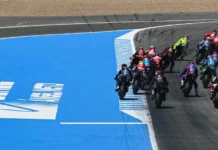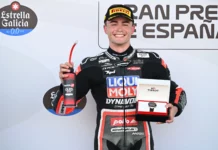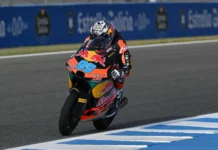The Motorcycle Industry Council Adopts Protocol For Determining Real-World Range of Electric Motorcycles Buyers Will Benefit from Accurate, Comparable Miles-Per-Charge Data IRVINE, Calif., April 29, 2011 Consumers looking for consistent and accurate information about the real-world riding range of electric on-highway motorcycles may soon find help from a new procedure developed by the Motorcycle Industry Council. The City Riding Range Test Procedure for Electric Motorcycles, created by the MIC’s Electric Vehicle Task Force, establishes a standard method for determining how far an electric bike will travel between full charges. Until now, manufacturers have used different methods for calculating range, making it difficult for shoppers to compare various electric motorcycles that they are considering for purchase. And some methods may not accurately estimate the actual range on a fully charged battery, even under similar operating conditions. The MIC anticipates that manufacturers will immediately and voluntarily begin using the protocol. The MIC task force also hopes to have this recommended procedure adopted by the Society of Automotive Engineers (SAE), an organization internationally known for developing motor vehicle standards. “Widespread adoption of this new standard could really help shoppers who are looking to purchase an electric motorcycle,” said Larry Little, chairman of the MIC Board of Directors. “The MIC is the perfect place to unite various stakeholders and reach consensus on workable test procedures that will benefit both consumers and manufacturers.” The MIC procedure is based on the Urban All-Electric Range Test used for electric cars under California and federal regulations. The procedure determines the range, expressed in miles or kilometers, for stop-and-go operation, representative of riding in an urban area over a variety of roads and traffic conditions. Since the MIC protocol is for motorcycles, which are ridden and not driven, it has been named the City Riding Range Test Procedure for Electric Motorcycles. Starting with a fully charged battery, range is determined based on the distance that can be traveled before the vehicle is no longer able to keep up with a specified speed-time profile. The basic driving cycle in the protocol sets top speed at 56.7 mph and average speed at 19.6 mph. A low-speed driving cycle, with a top speed of 36.5 mph and an average speed of 17.7 mph, is used for vehicles with a maximum speed under 56.7 mph but not below 20 mph. The MIC test procedure is not intended for vehicles with a top speed under 20 mph. The MIC’s Electric Vehicle Task Force includes representatives of on-highway electric motorcycle makers Brammo, Quantya and Zero, plus other original equipment manufacturers, distributors and MIC members. “It’s vital for electric motorcycle manufacturers to have standards that we can agree on and that customers will find useful,” said Scot Harden, vice president of global marketing for Zero Motorcycles in Santa Cruz, Calif. “We appreciate the much-needed efforts of the MIC, and everyone connected with the Electric Vehicle Task Force, as more and more electric motorcycles emerge on the market.” Besides the test procedure, the task force is addressing a broad scope of issues related to electric vehicles, such as land use, other technical/performance standards, public information and education. On Capitol Hill, the MIC’s government relations staff monitors and advocates lawmaking in Congress that promotes electric vehicle use and ensures that two- and three-wheeled vehicles are included in such legislation. In state legislatures across the country, debate over regulations and tax laws pertaining to electric vehicles is becoming more common as more of these machines are being produced and sold. The MIC is promoting electric motorcycle inclusion in numerous bills that provide tax credits and sales tax exemptions for four-wheel electric vehicles. The entire text of the MIC’s new City Riding Range Test Procedure for Electric Motorcycles is available here (~http://www.mic.org/downloads/MIC_EVCityRidingRangeTestProcedure_Rev042811.pdf~) The Motorcycle Industry Council exists to preserve, protect and promote motorcycling through government relations, communications and media relations, statistics and research, aftermarket programs, development of data communications standards, and activities surrounding technical and regulatory issues. It is a not-for-profit, national industry association representing manufacturers and distributors of motorcycles, scooters, motorcycle/ATV/ROV parts and accessories, and members of allied trades such as insurance, finance and investment companies, media companies and consultants. The MIC is headquartered in Irvine, Calif., with a government relations office in metro Washington, D.C. First called the MIC in 1970, the organization has been in operation since 1914. Visit the MIC at www.mic.org.
MIC Electric Vehicle Task Force Establishes Range Testing Procedures For Electric Motorcycles
MIC Electric Vehicle Task Force Establishes Range Testing Procedures For Electric Motorcycles
© 2011, Roadracing World Publishing, Inc.






